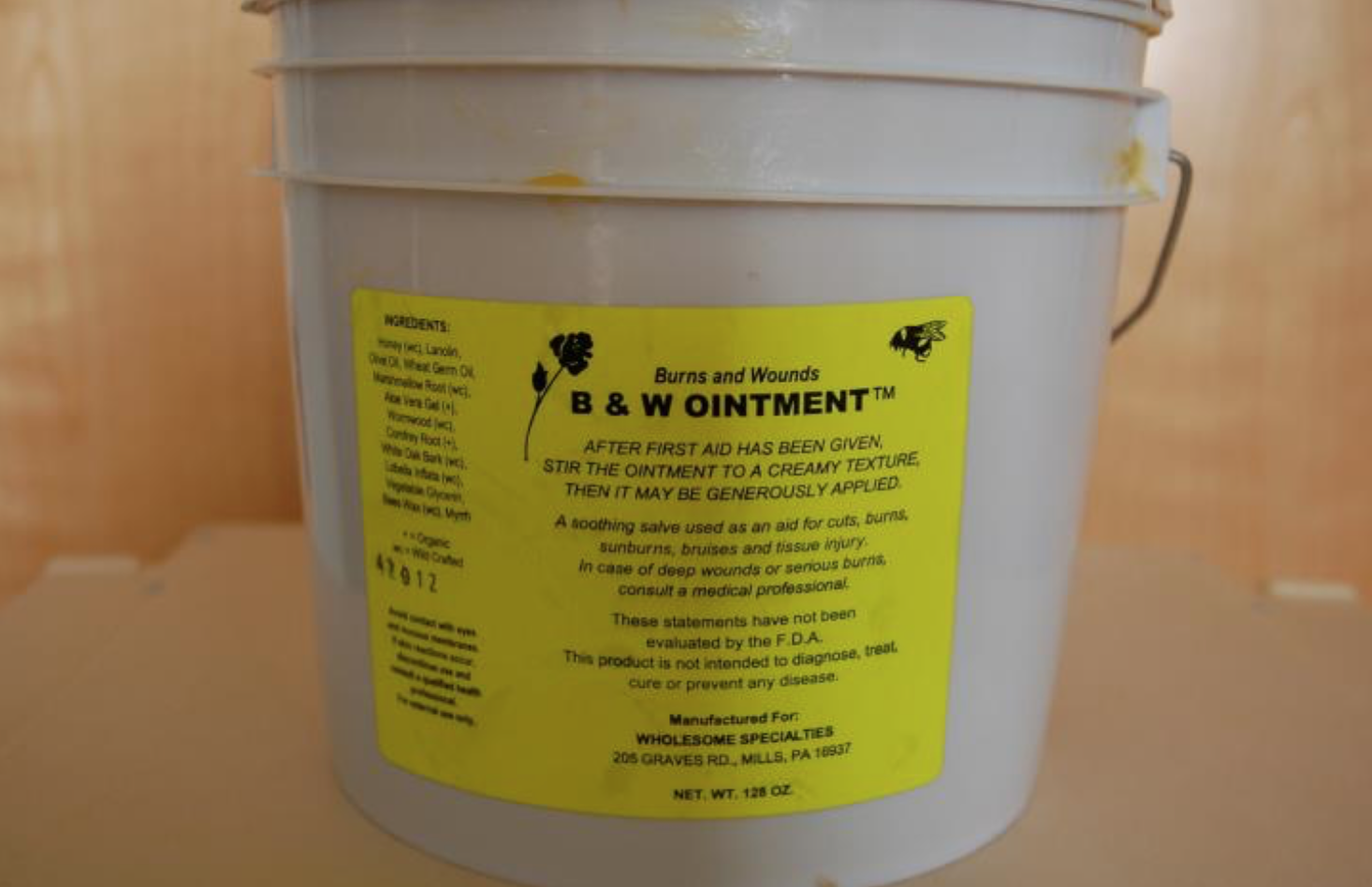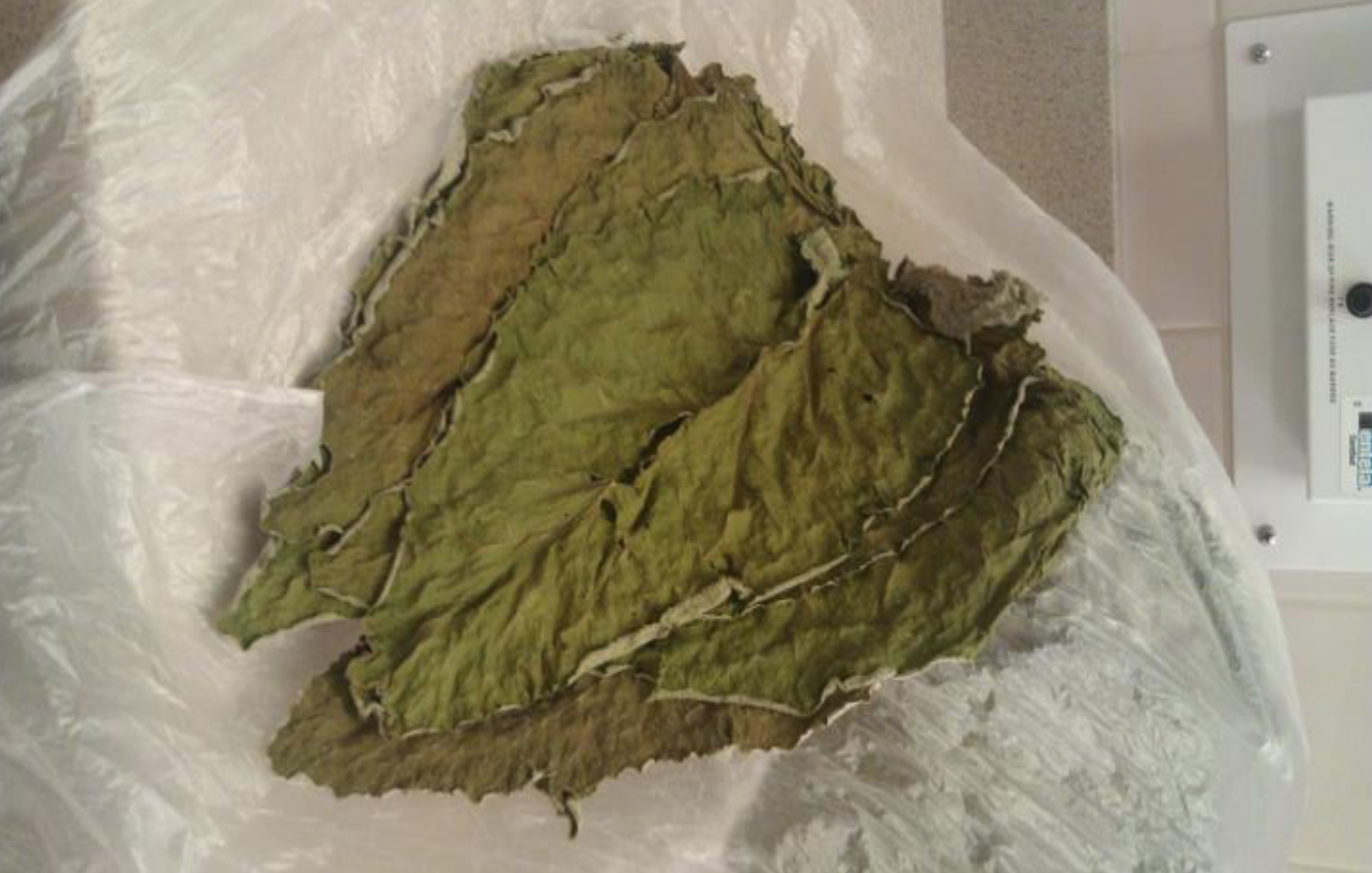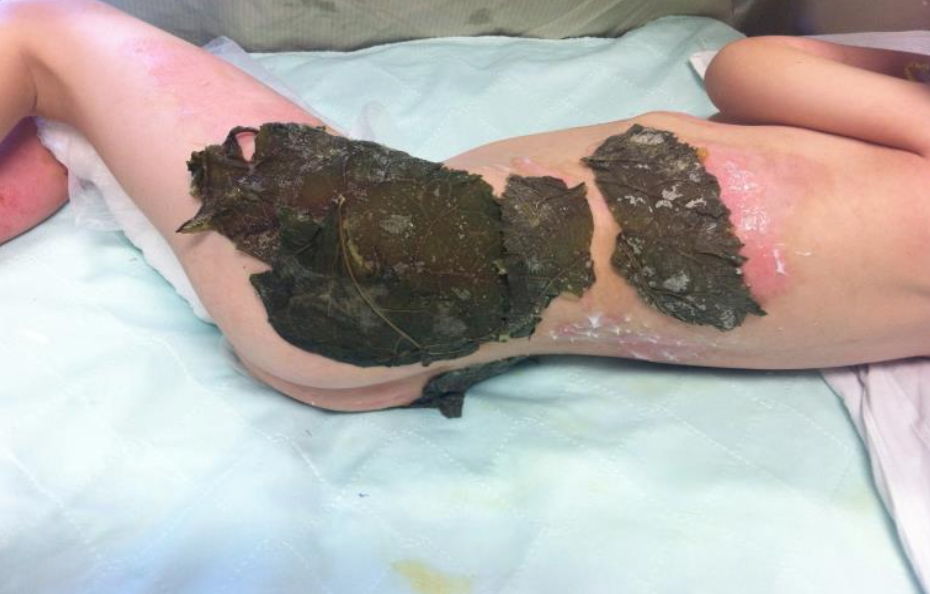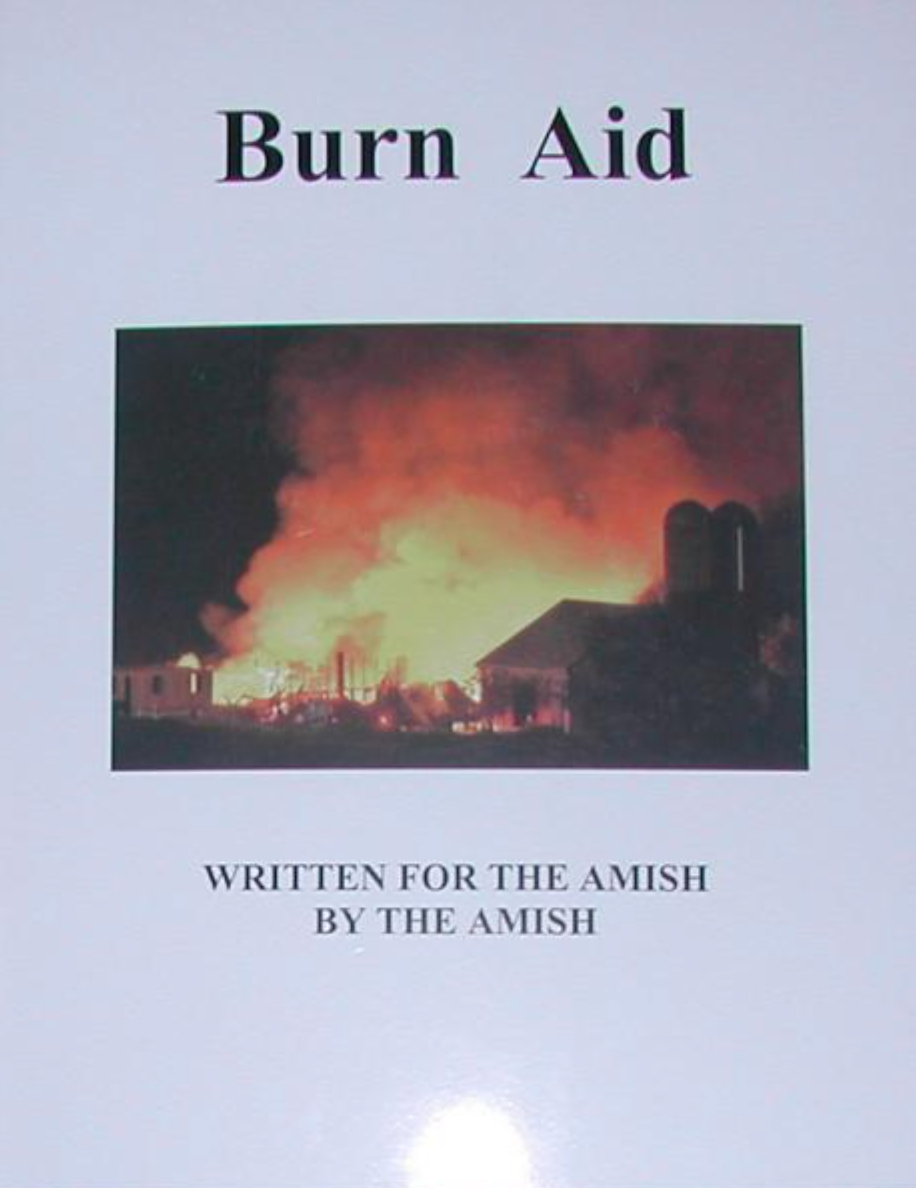Amish live in small rural communities where strong family and social ties allow them their own distinctive and separate way of life. The family is the heart of Amish community, individual identity and spiritual life. Amish live without cars, electricity, telephones, televisions or computers. They rely upon wood burning stoves for heat and cooking as well as using the horse and buggy for transportation. Evidence has shown that the Amish people are at a higher risk for burns and wounds as a result of their rural lifestyle.
When an Amish adult or child is burned, the family turns to the community healers. As part of their treatment, these healers apply an ointment called B & W, short for burn and wound ointment. Honey is one of its main ingredients, along with olive oil, wormwood, myrrh and other plant-based substances. After the ointment is applied, the wound is wrapped in (previously steamed) burdock leaves, which are then secured with gauze.
The History of B & W Ointment
B & W ointment was developed in the early 1990s after an Amish toddler (son of John Keim) was injured in an accident involving boiling water. John Keim who was an Amish alternative practitioner; needed a therapy to treat his son’s burns. A therapy that would relieve pain and stimulate healing. It was after Mr. Keim had gone into the woods to meditate and seek Divine guidance, that his attention was drawn to big plantain leaves. Keim believed they would serve as an ideal non-stick barrier between the salve he had applied to his son’s body and the gauze body wrap. After using many different types of leaves, the Burdock became his treatment of choice because of the size and availability of the leaves.
The Burdock Plant
Burdock is a common plant that can reach heights of six feet with heart-shaped leaves. At maturity the plant produces burs that commonly attach to clothing or animal fur (“sticker bushes”). Burdock is believed to have a high content of vitamins and minerals and is available in diverse preparations including pills, tinctures, teas, or dried roots. Burdock leaves are harvested when they are slightly larger than an adult’s hand. They are dried in a warm, dark place for four to seven days. They are then stored in a plastic container with a tight lid until needed, at which time they are rehydrated with boiling water.
Burn & Wound Ointment (B & W)
The main ingredient, and possibly the active ingredient, is honey. Remember that honey was recommended for burn treatment as far back as in ancient Egyptian times.
An Eight Pound (128 oz) Container of B & W Ointment
The Application Process
The Prepared Burdock Leaves
The B & W Ointment is Applied to the Prepared Burdock Leaves
The Preparation is then Applied to the Burn Injured Patient
The Claim Made with the B&W Treatment:
Painful burns are rendered non-painful.
Healing is faster.
Painful debridement is not necessary.
Skin grafting is not necessary.
Scarring seldom occurs.
Latrogenic harm from hospitals is avoided.
Patients can be treated at home at much less expense.
Possible Side Effects
This treatment is not without side effects. In many of the case histories, patients developed rashes, redness, red pimples, prickliness, and hives, interpreted as reactions to burdock leaves or to the ointment itself, requiring substitution or alternation with lettuce leaves, grape leaves, flaxseed paste, bag balm or other natural products. One of the biggest dangers in burns is infection. Through his published books on burn care, Keim tells patients not to worry about fever. He says fever is perfectly normal and part of the healing process but you should watch for a bad smell to detect infection. Fever can be treated with vitamin C powder.
Scientific Data & Research
Keim refined his product for over two decades, however, the evidence remains subjective. There are no official records of his work, no randomized control trials. Recently the Amish have enlisted the cooperation of doctors who are now allowing them to use the B&W treatment in the hospital under supervision. However, there is very little research to base any recommendations upon.
Two Quoted Articles Below
Seeking Common Ground UMHS works with Amish and Mennonite communities toward a culturally sensitive approach to burn treatment.
By Sara Talpos
“Determining how to standardize the ointment and leaves in order to achieve FDA approval of the study. Herbal supplements are difficult to test: Their chemical makeup varies depending on when and where harvesting occurs. Ideally, Skyles would like to buy standardized sources before compounding the B&W ointment in the pharmacy. The burdock leaves are trickier. Wang and Skyles acknowledge that the leaves work as an occlusive dressing, but the Plain community believes the leaves also contain an active component that seeps into wounds and provides pain relief. They want the leaves simmered or scalded in order to preserve the active component. These heating methods, however, do not kill all bacteria, and so may pose a risk to the patient.”
http://www.med.umich.edu/surgery/icam/seeking_common_ground.html
Amish Burn Ointment and Burdock Leaf Dressings: Assessments of Antimicrobial and Cytotoxic Activities
Journal of Burn Care & Research, Volume 35, Issue 4, July-August 2014, Pages e217–e223, Published:01 July 2014
Neither DI nor BL extracts demonstrated antimicrobial activity against any of organisms tested. The DI extract inhibited growth of both keratinocytes and fibroblasts at the 0.1% concentration. The 0.1 and 0.03% concentrations of the BL extract were cytotoxic to both keratinocytes and fibroblasts. Although tests for microbial growth from the at-use preparation of the ABO were negative, extracts of the DI and BL did not demonstrate any antimicrobial activity. Additionally, both extracts inhibited the growth of skin cells in vitro at higher concentrations. These results suggest caution in the use of ABO and BL dressings if there is more than a minimal risk of complications from the burn injury.”
https://doi.org/10.1097/BCR.0b013e3182a23228
References
https://doi.org/10.1097/BCR.0b013e3182a23228
https://sciencebasedmedicine.org/amish-home-burn-treatment-bw-salve-and-burdock-leaves/
https://www.ncbi.nlm.nih.gov/pubmed/24043243








